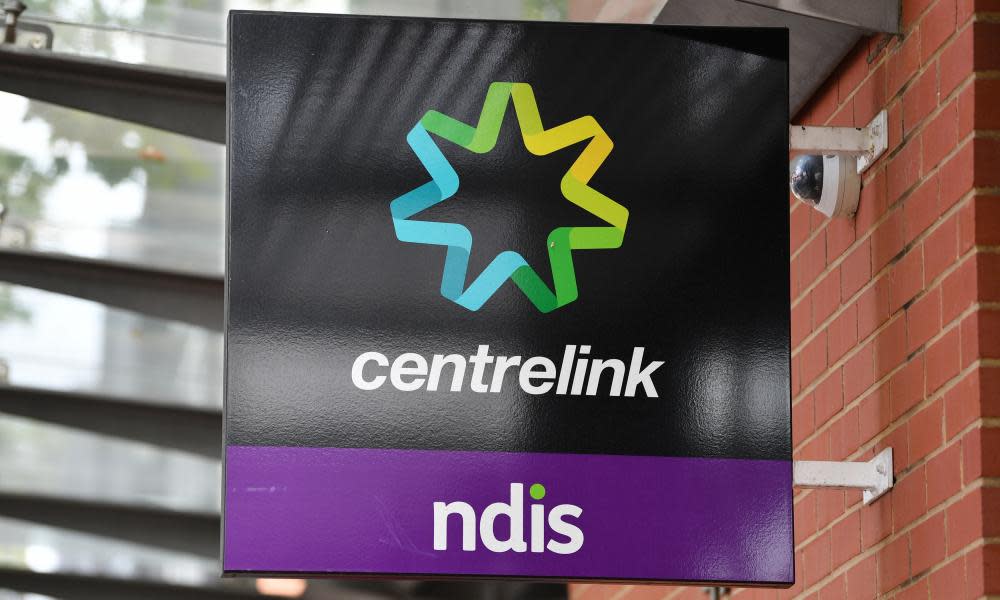Centrelink was warned robodebts could be inaccurate more than four years ago

The government agency responsible for the robodebt debacle was warned more than four years ago of a “major” risk that automated Centrelink debts could be inaccurate, documents show.
Facing a class action and having settled a seperate legal challenge in November, the government last week conceded that debts issued for alleged welfare overpayments using averaged annual ATO pay data were unlawful and promised to refund more than 460,000 debts.
But internal documents reveal some officials were worried about the eventually ill-fated decision to remove manual oversight to issue debts as early as March 2016, a few months before the Coalition announced a massive Centrelink crackdown on the eve of the election.
And a year earlier, a risk management document claimed the potential risks of the automated Online Compliance Intervention (OCI) – part of a suite of policies that became known as robodebt – could be managed with support from the government.
Related: Coalition won’t rule out passing new laws to reboot robodebt scheme
The August 2015 entry describing risks of creating the program state: “This risk is an: opportunity.”
They refer to a potential risk consequence as “Positive customer experience – customers able to self-manage their obligations to the Department”.
The internal documents – released to the IT expert Justin Warren after a three-year legal battle – suggest the department was keen to push ahead with the automation of debts despite warnings from ICT experts.
At the top of a list of potential risks that emerged during the design of the OCI was a “major” issue that stated: “Manually adjusted debt scenario agreed for June 2016 (stage 1) release was proposed by ICT as having a manual component to the automated functionality.
“ICT raised concerns of accuracy of the debt calculated if manual step is not included within the process. Additional manual effort required if solution includes manual step.”
It is unclear how the issue was resolved, but three months later the then treasurer Scott Morrison announced a new welfare crackdown during the election campaign. This included $527m in savings from “enhancing non-employment income data matching”.
The government has argued the unlawful “income averaging” of ATO annual pay data was also used by Labor governments, although critics say the Coalition super-charged the use of automation and reversed the onus of proof on welfare recipients.
Mass-scale Centrelink debt recovery was trialled in 2015 before a full rollout began in September 2016. By December, the Guardian was reporting on public outrage over the flawed scheme amid an increase of debt reviews from 20,000 a year to 20,000 a week and jail threats from the then minister Alan Tudge.
Claims the program would lead to a “positive customer experience” refer to a key policy change where people accused of a welfare overpayment were sent to an online portal to enter past fortnightly pay dating back up to six years.
At the time, the department told welfare recipients to only keep old pay slips for six months.
Warren said the documents showed its approach to risk management was “fundamentally flawed”.
“That’s the polite version,” Warren told the Guardian. “The less polite version involves a lot more swearwords.”
Warren said the documents raised “some quite serious questions about senior managers at DHS during this time”.
“How did such a massive failure escape their notice for so long? Or were they aware of it?” he said.
Related: Calls for royal commission into robodebt and apology from Morrison government
In December 2016 – when outrage over the scheme began to foment – the department knew welfare recipients who had moved house were first learning about alleged Centrelink overpayments from private debt collectors, the documents show.
And they reveal the department was made aware in October that officials conceded about 2,700 people were sent an incorrect debt. The issue was solved with an “emergency change”.
Hank Jongen, a spokesman for Services Australia, said: “The government recently announced debts will no longer be raised using income averaging of ATO data and all debts raised on that basis will be refunded.
“This five-year-old plan is a point-in-time analysis, and a routine part of planning and risk mitigation.
“Continuous enhancements have been made since then to improve customer experience.
“Appropriate steps were taken to mitigate the risks identified in this plan at that time.
“This included improvements rolled out in January 2017 ensuring people received both the initial review letter and the first reminder letter by registered mail.”

 Yahoo News
Yahoo News 
